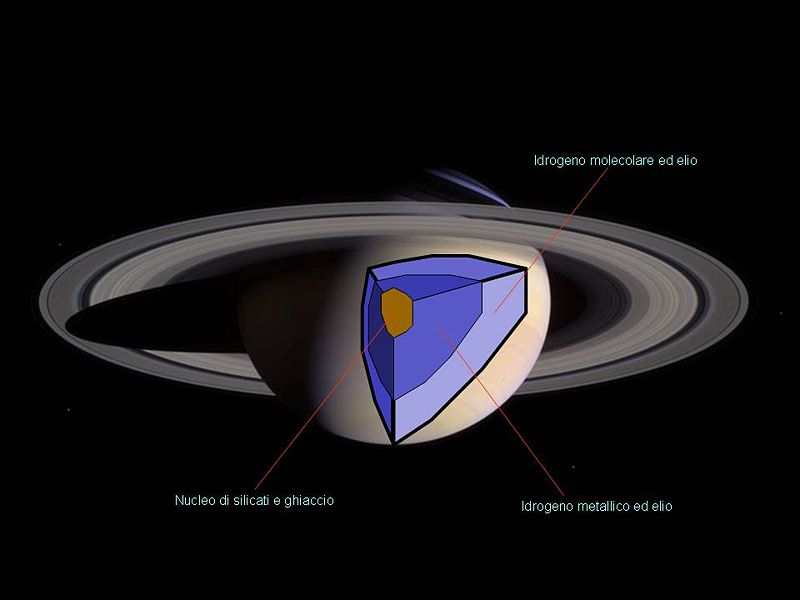Scientist know that Saturn is made up of 96% hydrogen and 3% helium with a few other elements thrown in. What they have never been able to confirm beyond a shadow of a doubt is the answer to does Saturn have a solid core.
According to the core accretion theory, the most widely accepted theory of planetary formation, Saturn would have had to form a rocky or icy core with a great deal of mass in order to capture such a high percentage of gasses from the early solar nebula. That core, like those of the other gas giants, would have had to form and become massive more quickly than those of the other planets in order to capture such a comparatively high percentage of primordial gasses. It is possible that atmospheric pressure and temperatures near the core region have allowed or caused some of the core material to be conveyed to the top of the atmosphere and lost into space, greatly reducing the current size of Saturn’s core.
While Saturn most likely formed from a rocky or icy core, it’s low density seems to point to more of a liquid metal and rock mixture at the core. Saturn is the only planet who’s density is lower than that of water. If anything the core region would be more like a ball of thick syrup with a few rocky chunks. There doesn’t seem to be any part of Saturn that is solid as we understand it. That is, there is no place that you could set foot on it and stand.
The metallic hydrogen core of Saturn does generate a magnetic field. A magnetic field created in this way is said to be generated through a metallic hydrogen dynamo. It’s magnetic field is slightly weaker that Earth’s and only extends to the orbit of its largest moon, Titan. Titan contributes ionized particles to Saturn’s magnetosphere which help create aurorae within Saturn’s atmosphere. Voyager 2 measured high solar wind pressure within the magnetosphere. According to measurements taken during the same mission, the magnetic field only extends to 1.1 million km.
The core region of Saturn may never be directly observed. Neither has the Earth’s. Despite that, scientists are fairly certain that, while Saturn has a core, it is not a solid mass of rock or metal, but a liquid metallic mixture similar to all of the gas giants.
Here’s an article about the core accretion theory of planetary formation, and how Saturn and Jupiter might have formed differently.
If you’d like more info on Saturn, check out Hubblesite’s News Releases about Saturn, and here’s some research about how Saturn and Jupiter might have formed around their solid cores.
We have recorded two episodes of Astronomy Cast just about Saturn. The first is Episode 59: Saturn, and the second is Episode 61: Saturn’s Moons.
Sources:
http://abyss.uoregon.edu/~js/ast221/lectures/lec15.html
http://solarsystem.nasa.gov/planets/profile.cfm?Object=Saturn

